Bird watching in Puzzlewood
Puzzlewood is alive with the sound of birds. Big thanks to Paul Bennell, an annual pass holder, for sharing these images and to the RSPB for allowing us to use their descriptions. If you want to listen to a bird, check out the RSPB website and if you wish to donate or get involved, we would encourage you to do so.
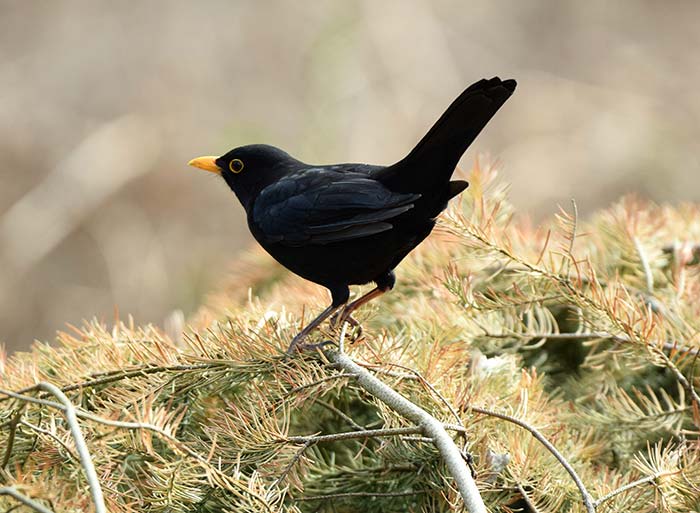
Blackbird
The males live up to their name but, confusingly, females are brown often with spots and streaks on their breasts. The bright orange-yellow beak and eye-ring make adult male blackbirds one of the most striking garden birds. One of the most common UK birds, its mellow song is also a favourite.
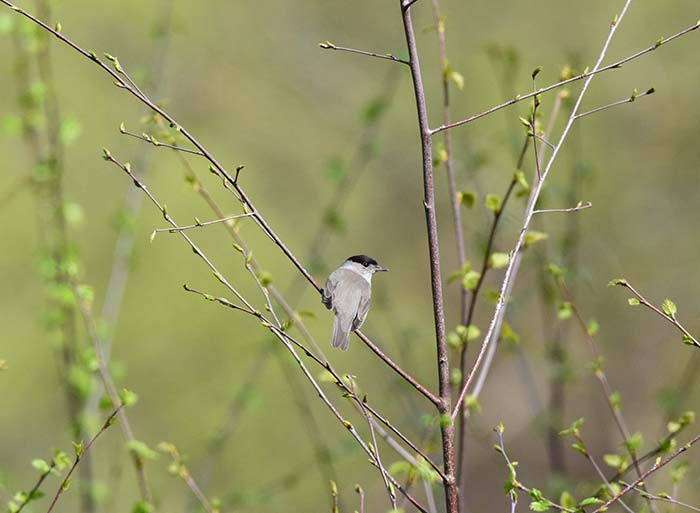
Blackcap
The blackcap is a distinctive greyish warbler, the male has a black cap, and the female a chestnut one. Its delightful fluting song has earned it the name 'northern nightingale'. Although primarily a summer visitor birds from Germany and north-east Europe are increasingly spending the winter in the UK.
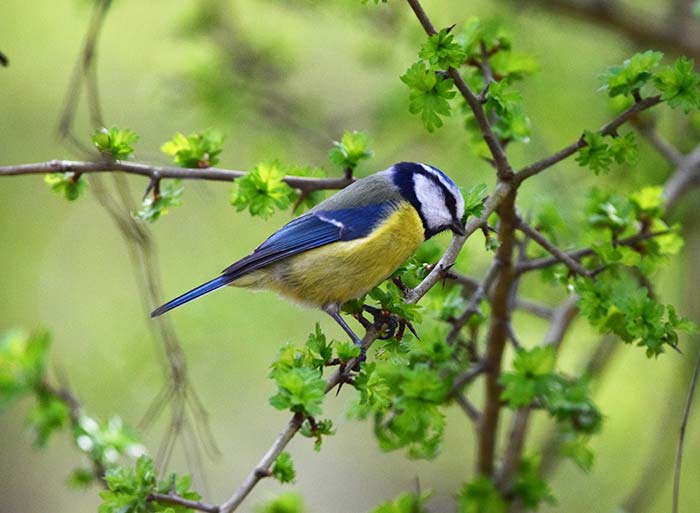
Blue Tit
A colourful mix of blue, yellow, white and green makes the blue tit one of our most attractive and most recognisable garden visitors. In winter, family flocks join up with other tits as they search for food. A garden with four or five blue tits at a feeder at any one time may be feeding 20 or more.
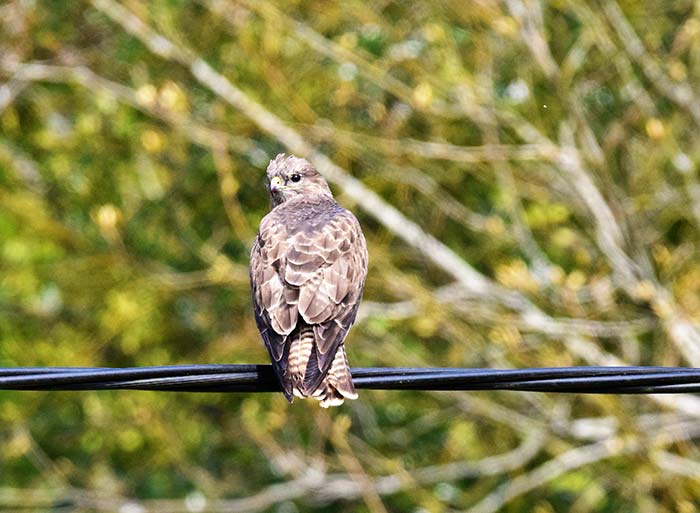
Buzzard
Now the commonest and most widespread UK bird of prey. The buzzard is quite large with broad, rounded wings, and a short neck and tail. When gliding and soaring it will often hold its wings in a shallow 'V' and the tail is fanned. Birds are variable in colour from all dark brown to much paler variations, all have dark wingtips and a finely barred tail. Their plaintive mewing call could be mistaken for a cat.
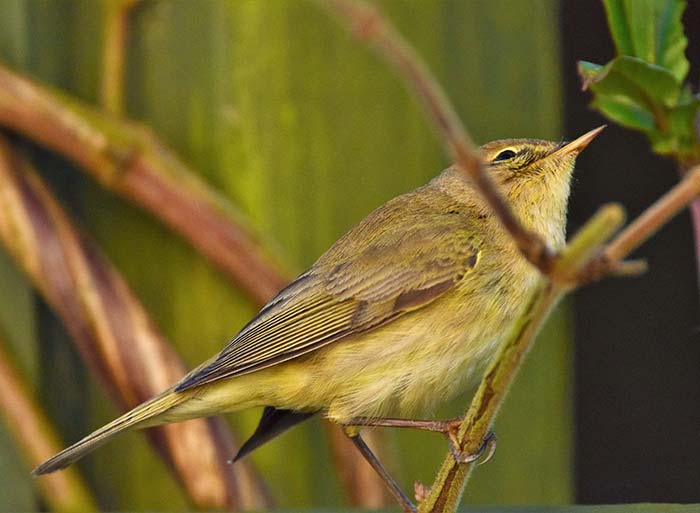
Chiffchaff
The chiffchaff is a small olive-brown warbler which actively flits through trees and shrubs, with a distinctive tail-wagging movement. Although not always the case, chiffchaffs often have dark legs and a short pale eye stripe, whereas the willow warbler - a very similar looking species - has pale legs and a long yellow eye stripe. It is readily distinguished by its song, from where it gets its name. It picks insects from trees and also flies out to snap them up in flight.
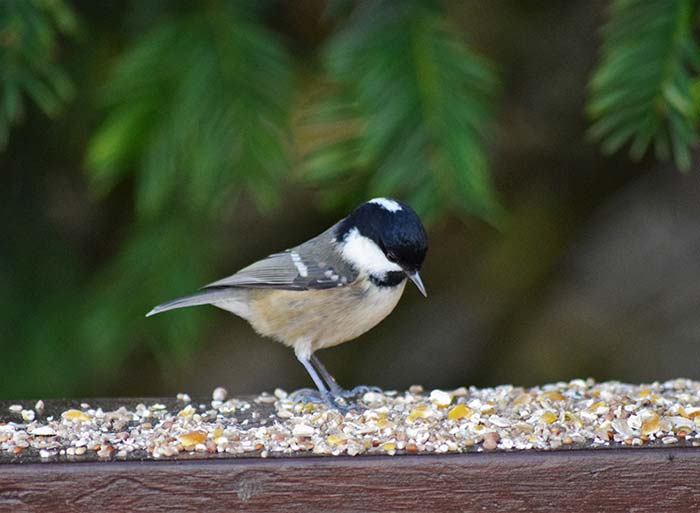
Coal Tit
Not as colourful as some of its relatives, the coal tit has a distinctive grey back, black cap, and white patch at the back of its neck. Its smaller, more slender bill than blue or great tits means it can feed more successfully in conifers. A regular visitor to most feeders, they will take and store food for eating later. In winter they join with other tits to form flocks which roam through woodlands and gardens in search of food.

Crow
The all-black carrion crow is one of the cleverest, most adaptable of our birds. It is often quite fearless, although it can be wary of man. They are fairly solitary, usually found alone or in pairs, although they may form occasional flocks. The closely related hooded crow has recently been split as a separate species. Carrion crows will come to gardens for food and although often cautious initially, they soon learn when it is safe, and will return repeatedly to take advantage of whatever is on offer.
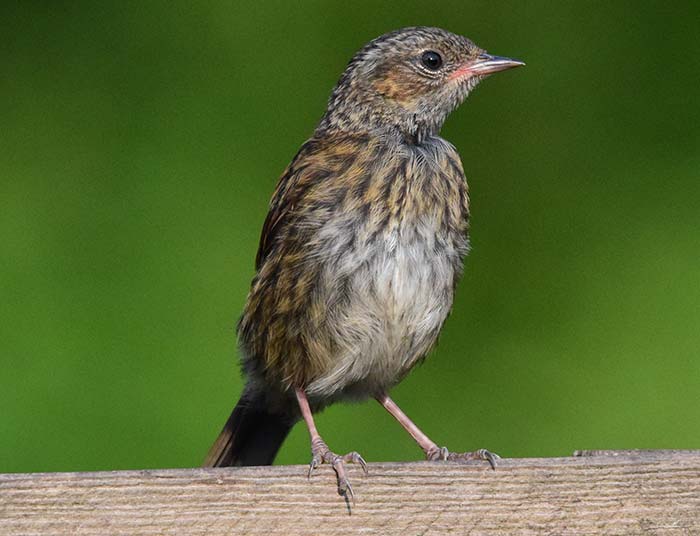
Dunnock
The dunnock is a small brown and grey bird. Quiet and unobtrusive, it is often seen on its own, creeping along the edge of a flower bed or near to a bush, moving with a rather nervous, shuffling gait, often flicking its wings as it goes. When two rival males come together they become animated with lots of wing-flicking and loud calling.

Goldfinch
The goldfinch is a highly coloured finch with a bright red face and yellow wing patch. Sociable, often breeding in loose colonies, they have a delightful liquid twittering song and call. Their long fine beaks allow them to extract otherwise inaccessible seeds from thistles and teasels. Increasingly they are visiting bird tables and feeders. In winter many UK goldfinches migrate as far south as Spain.
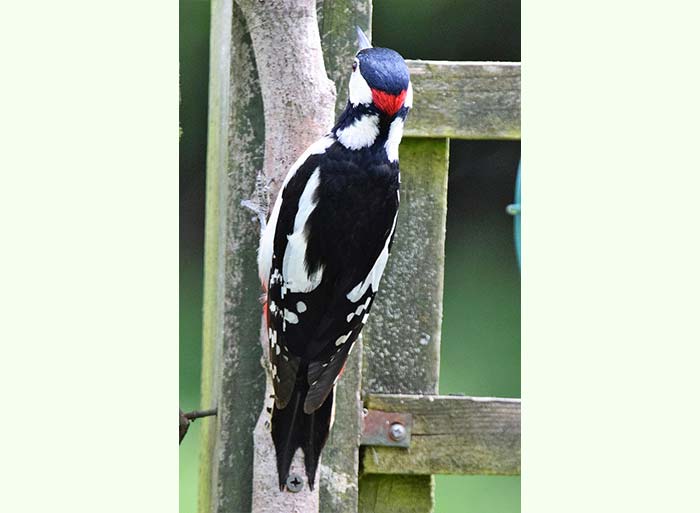
Great Spotted Woodpecker
About blackbird-sized and striking black-and-white. It has a very distinctive bouncing flight and spends most of its time clinging to tree trunks and branches, often trying to hide on the side away from the observer. Its presence is often announced by its loud call or by its distinctive spring 'drumming' display. The male has a distinctive red patch on the back of the head and young birds have a red crown.
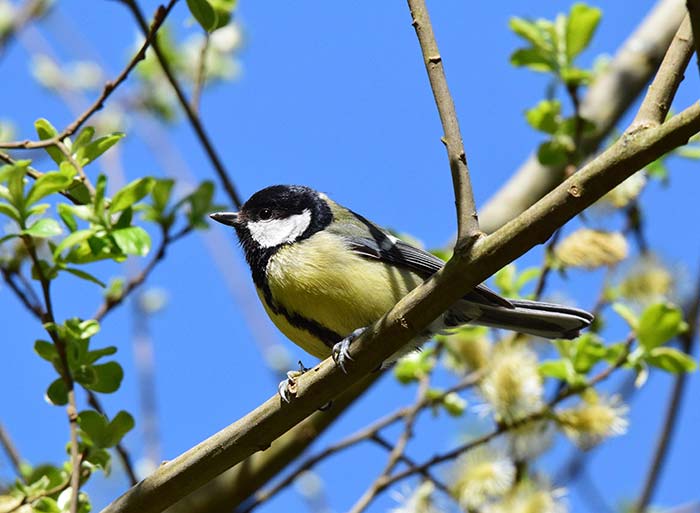
Great Tit
The largest UK tit - green and yellow with a striking glossy black head with white cheeks and a distinctive two-syllable song. It is a woodland bird which has readily adapted to man-made habitats to become a familiar garden visitor. It can be quite aggressive at a birdtable, fighting off smaller tits. In winter it joins with blue tits and others to form roaming flocks which scour gardens and countryside for food.
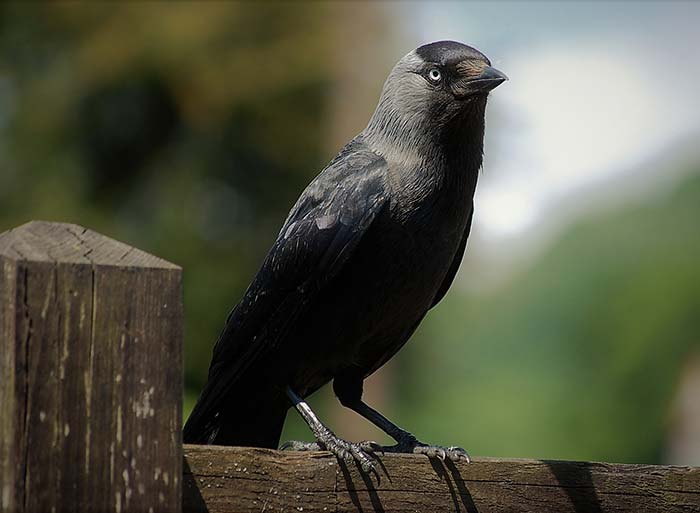
Jackdaw
This is a small, black crow with a distinctive silvery sheen to the back of its head. The pale eyes are also noticeable. The jackdaw call is a familiar hard 'tchack' from which it gets its name. It will commonly nest in chimneys, buildings, rock crevices and tree holes.

Jay
Although they are the most colourful members of the crow family, jays are actually quite difficult to see. They are shy woodland birds, rarely moving far from cover. The screaming call usually lets you know a jay is nearby and it is usually given when a bird is on the move, so watch for a bird flying between the trees with its distinctive flash of white on the rump. Jays are famous for their acorn feeding habits and in the autumn you may see them burying acorns for retrieving later in the winter.
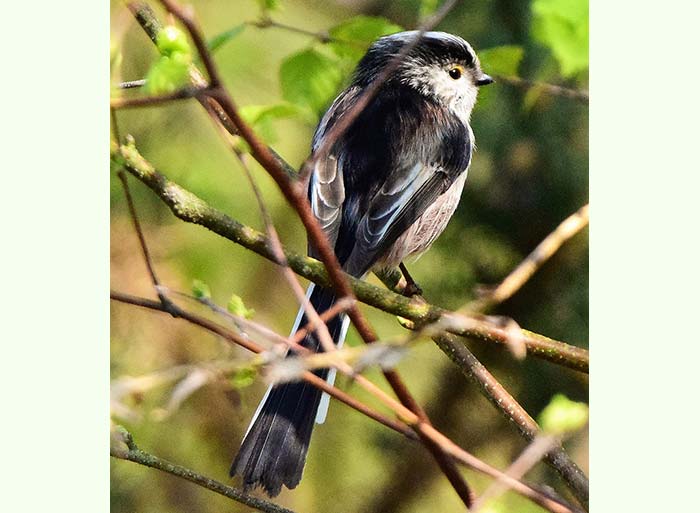
Long-Tailed Tit
The long-tailed tit is easily recognisable with its distinctive colouring, a tail which is bigger than its body, and undulating flight. Gregarious and noisy residents, long-tailed tits are most usually noticed in small, excitable flocks of about 20 birds. Like most tits, they rove the woods and hedgerows, but are also seen on heaths and commons with suitable bushes.

Magpie
With its noisy chattering, black-and-white plumage and long tail, there is nothing else quite like the magpie in the UK. When seen close-up its black plumage takes on an altogether more colourful hue with a purplish-blue iridescent sheen to the wing feathers and a green gloss to the tail. Magpies seem to be jacks of all trades - scavengers, predators and pest-destroyers, their challenging, almost arrogant attitude has won them few friends. Non-breeding birds will gather together in flocks.

Robin
The UK's favourite bird - with its bright red breast it is familiar throughout the year and especially at Christmas! Males and females look identical, and young birds have no red breast and are spotted with golden brown. Robins sing nearly all year round and despite their cute appearance, they are aggressively territorial and are quick to drive away intruders. They will sing at night next to street lights.
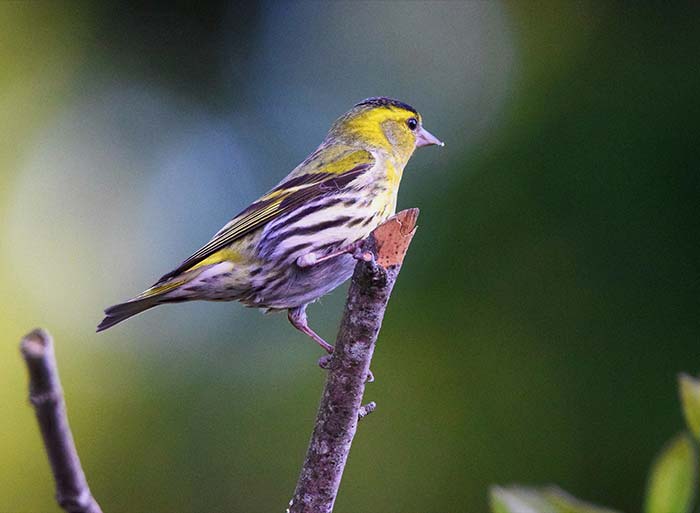
Siskin
The siskin is a small, lively finch, which is smaller than a greenfinch. It has a distinctly forked tail and a long narrow bill. The male has a streaky yellow-green body and a black crown and bib. There are yellow patches in the wings and tail. It is mainly a resident breeder from southern England to northern Scotland, but is most numerous in Scotland and Wales. Many breeding birds are residents; in winter birds arrive here also from Europe.
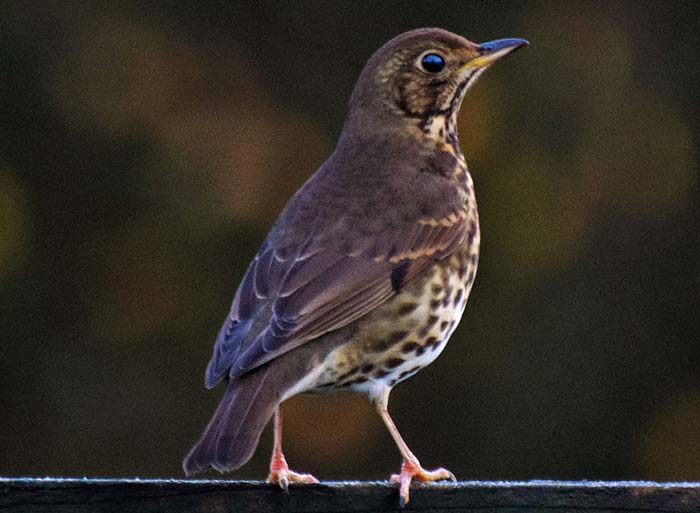
Song Thrush
A familiar and popular garden songbird whose numbers have declined markedly on farmland and in towns and cities. It's smaller and browner than a mistle thrush with smaller spotting. Its habit of repeating song phrases distinguish it from singing blackbirds. It likes to eat snails which it breaks into by smashing them against a stone with a flick of the head.
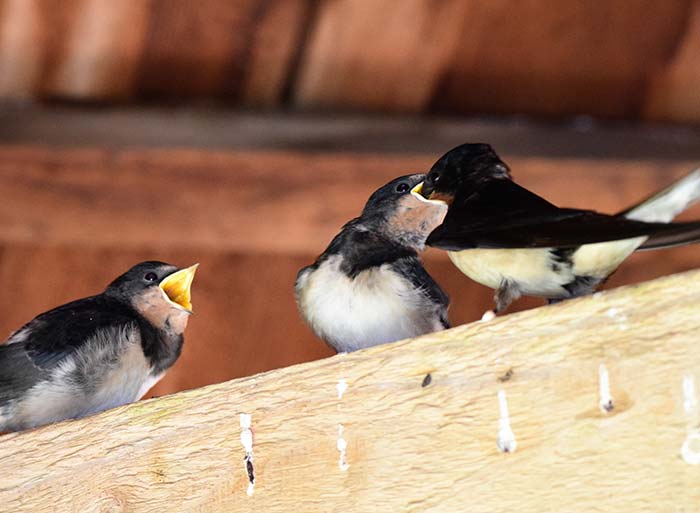
Swallow
Swallows are small birds with dark, glossy-blue backs, red throats, pale underparts and long tail streamers. They are extremely agile in flight and spend most of their time on the wing. They are widespread breeding birds in the Northern Hemisphere, migrating south in winter. Swallow numbers in the UK have fluctuated over the last 30 years with pronounced regional variation in trends.
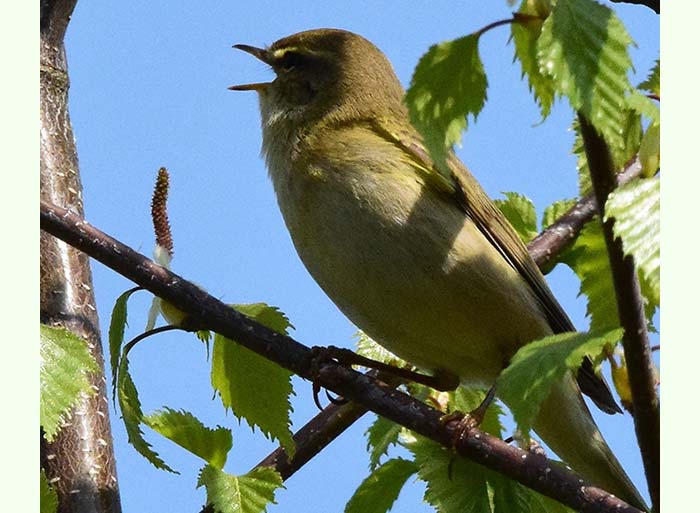
Willow Warbler
Willow warblers are small birds with grey-green backs and pale under parts. They have a yellow tinged chest and throat and pale supercilium (the stripe above the eye). They are separated from the very similar chiffchaff by their song. Their population, especially in southern Britain, has undergone a moderate decline over the past 25 years making them an Amber List species.

Wren
The wren is a tiny brown bird, although it is heavier and not as slim as the even smaller goldcrest. It is dumpy, almost rounded, with a fine bill, quite long legs and toes, very short round wings and a short, narrow tail which is sometimes cocked up vertically. For such a small bird it has a remarkably loud voice. It is the most common UK breeding bird, although it suffers declines during prolonged, severely cold winters.





